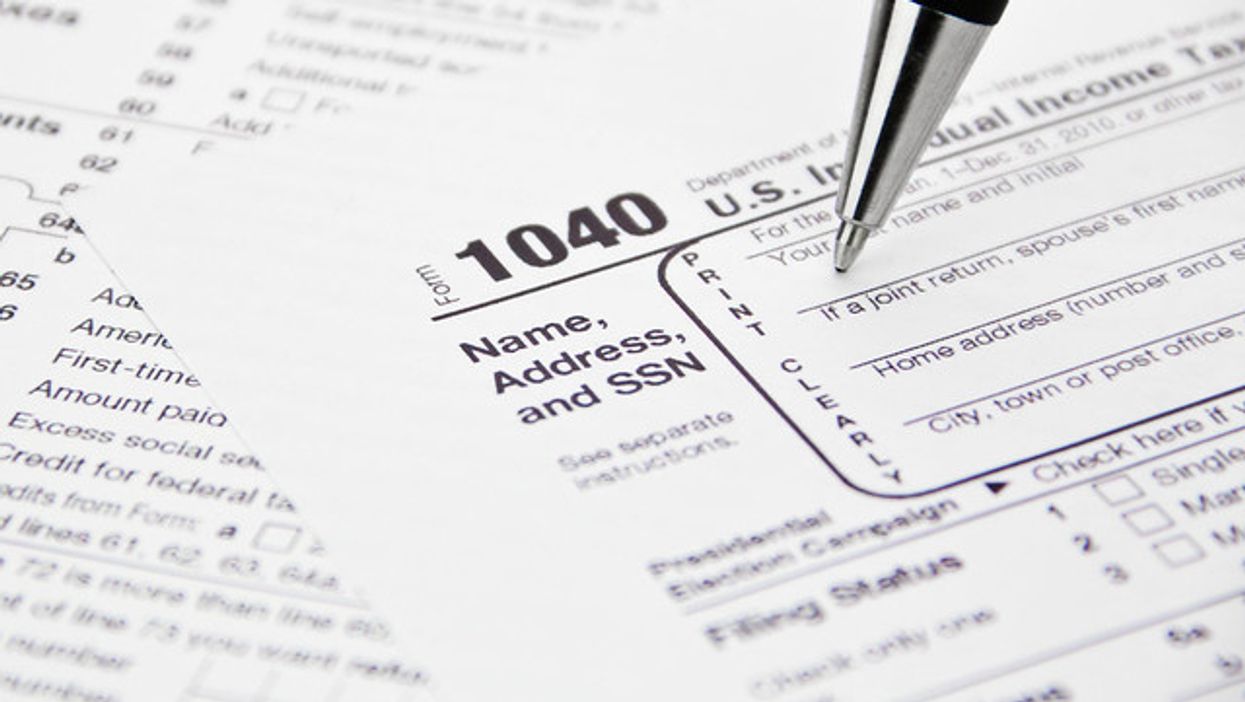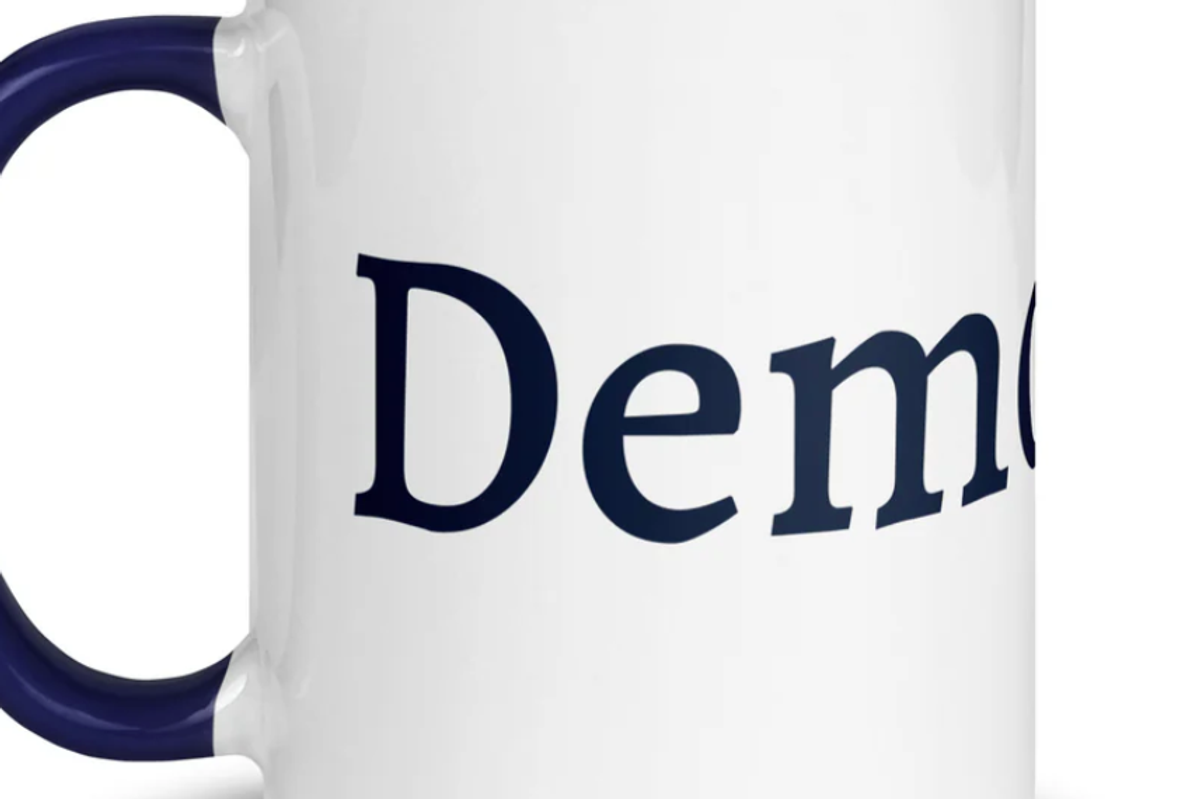Right-Wing Media Back Trump's 'Deranged' Plan To Replace Tax With Tariffs
During a June 13 meeting with Republican elected officials on Capitol Hill, disgraced former president, convicted felon, and presumptive Republican presidential nominee Donald Trump reportedly floated a proposal for a second term that could involve replacing income taxes with tariffs (taxes on imported goods). Republican attendees later confirmed that Trump had proposed using tariffs (which increase costs for consumers) to cut or even replace income taxes.
Tax and economic policy experts from across the political spectrum criticized Trump's proposal, which could severely disrupt international commerce and the domestic economy while supplanting the United States' existing system of progressive income taxation with regressive consumption taxes.
Some in media blasted the idea as impossible and even “deranged,” pointing out that it would be impossible to replace income tax revenue with tariffs, with experts highlighting that the plan would amount to a huge tax increase for middle class and lower-income Americans. Yet, some in conservative media offered support for the unworkable idea.
Media outlets explain that Trump’s idea just can’t work
Business-focused news organizations such as Bloomberg and even the conservative-leaning Wall Street Journal noted in their reporting of Trump’s idea that replacing income taxes with tariffs is simply unworkable. On cable news, MSNBC called out Trump’s idea as “bananas,” “deranged,” and devastating for working Americans.
- Bloomberg: “Using tariff increases to offset income taxes is a tall order, because the US brings in much more money from levies on individuals than on imported products.” Bloomberg noted that “customs duties still make up just 2% of federal revenues — while the individual income tax made up almost half of federal receipts in 2023, according to the Office of Management and Budget.” Bloomberg further explained that “increasing tariffs to pay for even a modest tax cut would require a massive hike in import levies that would mean a big increase on consumer prices.” [Bloomberg, 6/13/24]
- The Wall Street Journal: Trump’s idea of “replacing the entire income tax system with tariffs” is “an arithmetically challenged plan that would reverse more than 100 years of progressive taxation and is virtually assured to raise consumer prices.”The Wall Street Journal further explained that “Trump’s tariffs—or any tariffs—are almost certainly too small to replace the entire income tax. The U.S. imports less than $4 trillion of goods annually and it collects $2.5 trillion in individual income taxes, which means it would take tariff rates of 70% or higher to fill the void left by repealing income taxes. It depends, too, on how much demand for imported goods changes as tariffs rise.” [The Wall Street Journal, 6/14/24]
- MSNBC’s Stephanie Ruhle: Trump’s policy pitch “was bananas.” One of her guests, CNBC senior analyst Ron Insana, replied that “it would launch a global trade war because you’d get retaliatory tariffs from every other country on the planet.” He added, “We import $3.8 trillion worth of goods. We take in $2.5 trillion in revenue from individual income taxes. So, do the math. You’d have to basically almost put 100% tariffs on all imported goods coming to the United States, which would exacerbate inflation, launch a global trade war, possibly spark a recession or worse.” [MSNBC, The 11th Hour with Stephanie Ruhle, 6/13/24]
- MSNBC’s Chris Hayes: “Donald Trump proposed one of the most deranged policies I have ever heard.” [MSNBC, All In with Chris Hayes, 6/13/24]
CHRIS HAYES (HOST): Today, behind closed doors, outside of the view of cameras, Donald Trump proposed one of the most deranged policies I have ever heard. He told Republican lawmakers behind closed doors he wants to eliminate the income tax and replace it entirely with tariffs, effectively taking us back to the 19th century. This idea makes as much sense as ripping up the entire Interstate Highway System and replacing it with canals.
Economist Paul Krugman did some back of the envelope math and estimates the policy, quote, “would require an average tariff of 133%.” Not 10%. That is a 133% tax hike on all imported goods that would be passed on to consumers. A sales tax of 133%. It would cost Americans hundreds of millions of dollars. Former senior policy adviser to the National Economic Council Brendan Duke explained further, quote: “Another way to put Trump's latest incredibly unworkable idea. One—” get this, “It would raise taxes by $5,000 for a typical family,” if you’re a working person who buys stuff. “It would cut taxes for the average family in the top 0.1% by $1.5 million.”
This proposal would jack up everything, everywhere for normal people, crushing the average American's wallet, while giving the wealthiest folks who no longer have to pay an income tax and don't buy that much relative to their income, an enormous windfall. Millions and millions of dollars. This is the man who has a 50-50 shot of taking the White House, in large part because of the macroeconomic conditions that produced high inflation. And he is seriously, quite seriously and earnestly, currently running on the most insanely inflationary platform I’ve ever seen. Higher prices, higher taxes, for everyone. It would make what we’ve seen over the last few years look like nothing.
Experts from across the political spectrum explain how Trump’s proposal would raise prices and taxes on the middle class and why it can’t replace the income tax
- Senior fellow Kyle Pomerleau of the conservative American Enterprise Institute wrote: “Fundamentally unserious stuff. … The price of imports would rise, but so would the [dollar], leading to lower sales and income for exporters.” [MarketWatch, 6/13/24]
- Committee for a Responsible Federal Budget senior vice president Marc Goldwein: “U.S. imports total ~$3.5 trillion per year, while total income tax revenue is about $3 trillion ($2.5t individual). You’d be well on the wrong side of the tariff Laffer Curve if you tried this.” Goldwein’s Laffer Curve comment reflects the hypothesis that setting high tariffs (as a tax) would end up reducing the economic activity it is taxing, thus reducing the amount of revenue. [MarketWatch, 6/13/24; Cato Institute, 11/21/23]
- Tax Foundation senior economist and research director Erica York: “The individual income tax raises about $2 trillion annually on a tax base of personal income of roughly $15 trillion. Customs duties currently raise about $80 billion annually on imports of $3.4 trillion.” [MarketWatch, 6/13/24]
- Former White House Council of Economic Advisers chief economist Ernie Tedeschi: “The most important takeaway from the last 48 hours of tax talk is that President Trump is seriously toying with a large, broad additional tariff as a central component of our tax system. Regardless of the specific rate, that means a substantially higher middle class tax burden.” [Twitter/X, 6/14/24]
- Nobel prize-winning economist Paul Krugman: “My first-pass estimate” on Trump’s idea of replacing the income tax with tariffs “is that this would require an *average* tariff rate of 133 percent.” Krugman added: “So how is it that in the 19th century the federal government largely paid its way with tariffs? Because back then the government was much, much smaller. Believing that we can go back to those days is just ignorant.” [Twitter/X, 6/13/24, 6/13/24]
- Brendan Duke, senior director for economic policy at the Center for American Progress Action Fund wrote: “It shifts taxes from wealthy people to low- and middle-income people and people who buy groceries and people who go to Target.” In a thread posted on X, formerly known as Twitter, Duke also explained how Trump’s idea could have negative “effects on democracy and transparency” as well, including by potentially granting “tariff exemptions to supporters & people who give him money” and raising “tariffs on his supporters' foreign competitors,” which would “dovetail” with “the Trump/Project 2025 project of eliminating the bureaucracy's guardrails from political interference.” [The Wall Street Journal, 6/14/24; Twitter/X, 6/14/24, 6/14/24]
- Washington Post columnist Catherine Rampell: With millions of Americans who pay no income taxes paying tariffs instead, “this sounds like a huge tax increase on the lower/middle income classes.” [CNBC, 6/13/24]
- Economic analyst Steven Rattner: “Swapping all income tax for tariffs would be unbelievably regressive.” [MarketWatch, 6/13/24]
Right-wing and fringe media endorse Trump’s impossible idea
- Heritage Foundation economist and former Trump adviser Stephen Moore: Trump’s 10% earlier tariff proposal could instead pay for extending the Trump tax cuts, or the revenue could be dedicated to “lower[ing] the payroll tax—which deters work and hiring.” Moore's pivot to the payroll tax is telling, as it is the dedicated funding source for Social Security, a long-time target of right-wing devotees committed to altering and eventually eliminating the crucial benefit program for retirees. [The Wall Street Journal, 6/14/24; Media Matters, 3/13/24]
- Moore on Newsmax: “If you could actually eliminate the federal income tax and replace it with an across-the-board tariff, that would be a very good thing for the economy.” Moore continued with his full-throated endorsement of the idea: “Obviously, it would mean, you know, we wouldn't have 40, 50, 70%, you know, progressive income tax rates. You'd be taxing people on their consumption rather than their investments and savings. So, it'd be rocket fuel for the economy if you could do it.” Moore concluded: “For the first 100 and almost 150 years of this country, we had no income tax and we funded most of our government through tariffs. And that was a much more efficient way to fund government than through our crazy income tax right now.” [Newsmax, The National Report, 6/14/24]
- On Fox Business, Moore retreated from humoring Trump’s idea as a replacement for the income tax: “This is a perfect example of where the left takes Trump literally and not seriously.” Moore watered down Trump’s idea, saying: “He wasn't saying we’re going to completely eliminate the income tax. What he meant to say is that with the tariff revenue that we bring in, if he does that 10% across-the-board tariff, we could use some of that money to reduce income taxes. You could maybe reduce the — you could probably get rid of the entire gift and estate and the death tax. You could maybe cut the capital gains tax. Maybe you could reduce the payroll tax on workers a little bit.” [Fox Business, Varney & Co., 6/17/24]
- Fox Business host and former Trump adviser Larry Kudlow admitted Trump’s tariff idea can’t replace individual income tax, but pushed it as a replacement for corporate taxes. On his show, Kudlow said “the numbers don’t work” to replace individual income taxes with tariffs before adding: “But the corporate income tax numbers work.” [Fox Business, Kudlow, 6/14/24]
- Fox & Friends First co-host Todd Piro: “Could Trump get rid of the income tax?” Fox Business anchor Cheryl Casone replied, “I want to say that sounds good, but — OK, let me explain this. It sounds good.” She continued, “Former President Trump is now floating the idea of the U.S. eliminating income taxes, replacing it with tariffs on imported goods. He also says that tariffs could be negotiating leverage against bad actors out there.” Casone then suggested the idea was a way for Trump to get campaign financing from Wall Street, but did not say that the idea would be unworkable. [Fox News, Fox & Friends First, 6/14/24]
- Fox Business host Charles Payne: “It’s one of these things that … sounds nuts, that sounds far fetched. … Except if — most Americans don’t realize we didn’t always have an income tax.” Payne lamented the initial creation of the income tax structure a century ago, proclaiming “when government got bigger, it got hungrier for power” after the two World Wars. Payne acknowledged “it couldn’t work completely now” but seemed to express nostalgia for when America “actually had an economy driven by zero income taxes.” [Fox News, America’s Newsroom, 6/14/24]
- Fox Business correspondent Hillary Vaughn: “If the side effect of all of this … is the government being cut down to size, Republicans probably won’t see that as a downside.” [Fox Business, Mornings with Maria Bartiromo, 6/14/24]
- Gateway Pundit referred to Trump’s idea as “a bold proposal” and “bombshell proposal” to “abolish income tax and implement an ‘all tariff policy.’” [The Gateway Pundit, 6/13/24]
- Townhall: “Trump Gets Positive Feedback After Floating Proposal of Eliminating Income Tax.” Townhall’s idea of “positive feedback” appears to consist of posts from several random pro-Trump social media users who agreed with the idea. [Townhall, 6/13/24]
- Students for Trump founder Ryan Fournier: “Eliminating the income tax and replacing it with tariffs doesn’t sound like a bad idea.” [Twitter/X, 6/13/24]
- Multiple QAnon figures endorsed Trump’s idea. QAnon John wrote: “This would be a MASSIVE BLOW to the Central Bank Cabal. Quite possibly THE single most devastating blow Trump could bring to the Globalists. With a cessation of income tax feeding the fiat debt machine, the Federal Reserve would be FORCED to dissolve into the abyss. It would be the END OF THE FED & DEBT SLAVERY. THAT IS HOW YOU MAKE AMERICA GREAT AGAIN. BRING. IT. ON.” Woke Societies wrote: “Who’s going to say no to this? Trump just won.” Jordan Sather wrote: “How can you not support this?” [Gab, 6/13/24; Telegram, 6/13/24, 6/14/24; Media Matters, 4/18/22]
Reprinted with permission from Media Matters.












